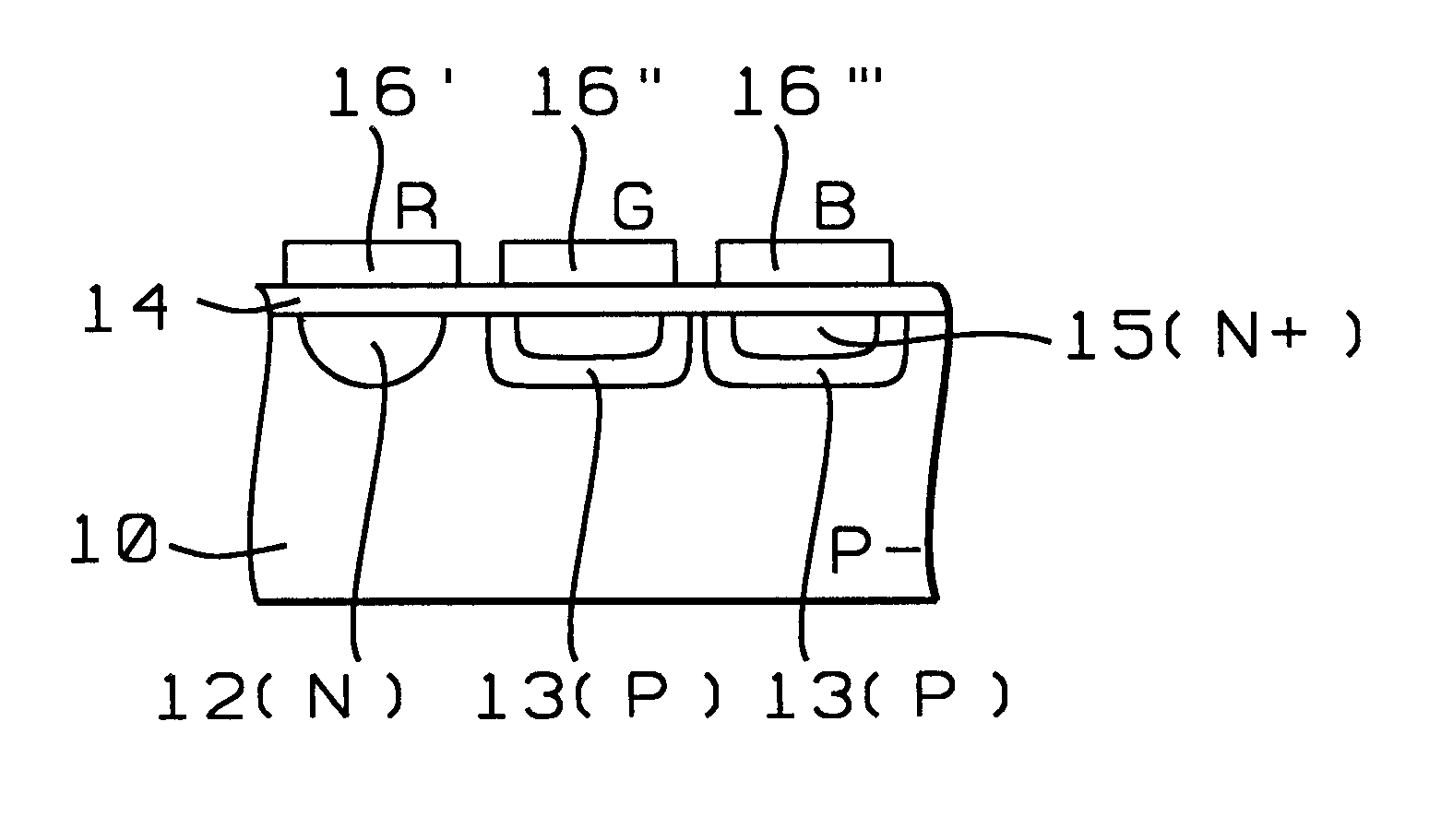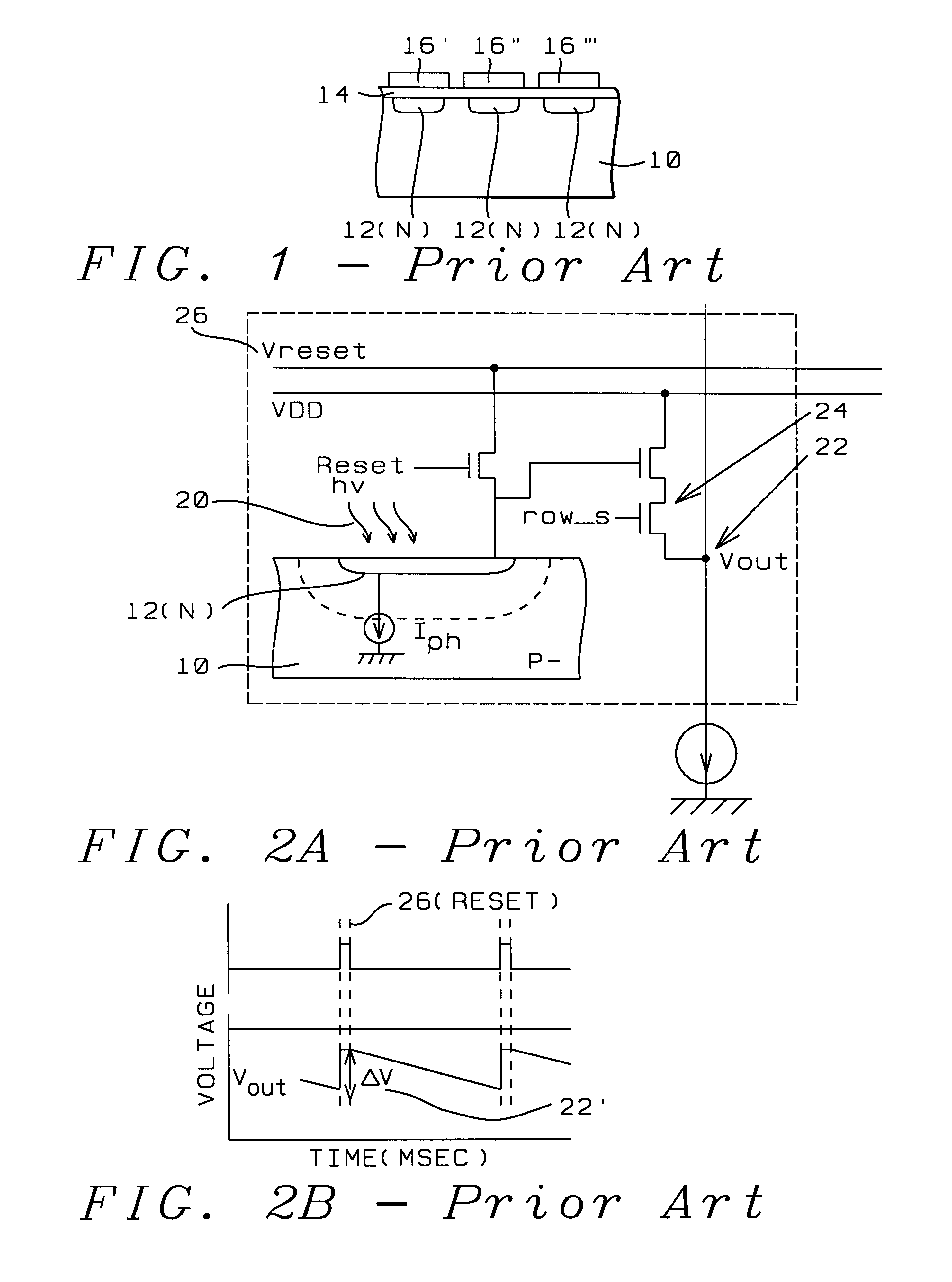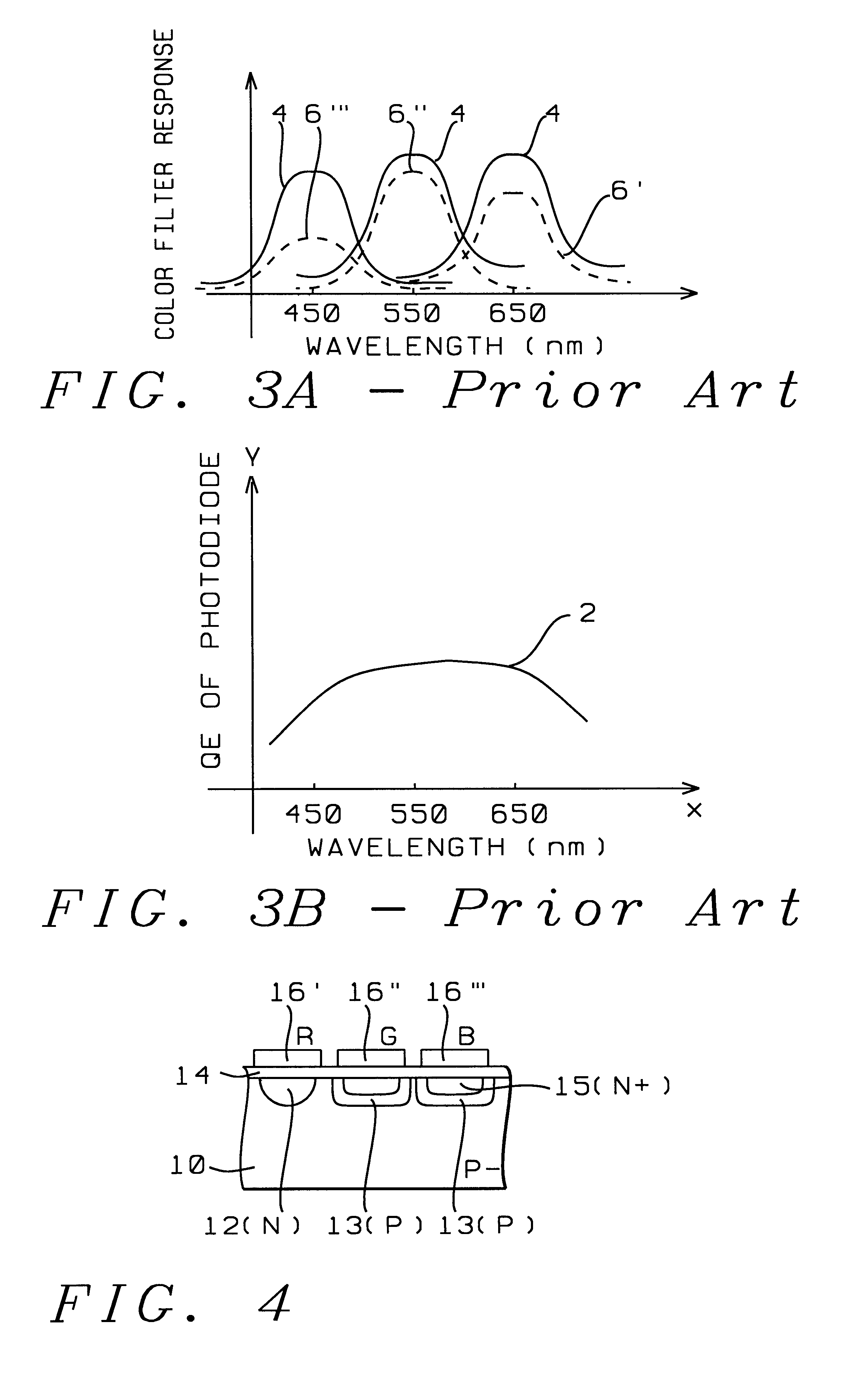Method for making spectrally efficient photodiode structures for CMOS color imagers
a color imager and photodiode technology, applied in the direction of electrical equipment, semiconductor devices, radio frequency controlled devices, etc., can solve the problems of poor color fidelity, poor color fidelity, and not economically practicabl
- Summary
- Abstract
- Description
- Claims
- Application Information
AI Technical Summary
Problems solved by technology
Method used
Image
Examples
Embodiment Construction
To better appreciate the invention for making these photodiodes with improved uniformity across the spectral range, the quantum efficiency (QE) of these photodiodes was determined as a function of optical wavelength. The QE was determined by simulating the collector efficiency as a function of optical wavelength for the N well photodiodes 12(N) and the N.sup.+ photodiodes 15(N.sup.+) formed in the P wells 13(P) for the photodiodes depicted in FIG. 4. The QE was simulated using a Medici simulation program provided by Avanti Corp. of U.S.A. FIG. 5 shows a plot of a curve 8 for the collector efficiency vs. the optical wavelength in micrometers for the deep N well red photodiode 12(N). As depicted in FIG. 5, the QE is about maximum (60%) at the long wavelength (650 um) for the red light, and the QE drops off dramatically to about 50% at the shorter wavelengths (450 um) for the blue light. FIG. 6 shows a plot of a curve 9 for the collector efficiency vs. the optical wavelength in microme...
PUM
 Login to View More
Login to View More Abstract
Description
Claims
Application Information
 Login to View More
Login to View More - R&D
- Intellectual Property
- Life Sciences
- Materials
- Tech Scout
- Unparalleled Data Quality
- Higher Quality Content
- 60% Fewer Hallucinations
Browse by: Latest US Patents, China's latest patents, Technical Efficacy Thesaurus, Application Domain, Technology Topic, Popular Technical Reports.
© 2025 PatSnap. All rights reserved.Legal|Privacy policy|Modern Slavery Act Transparency Statement|Sitemap|About US| Contact US: help@patsnap.com



